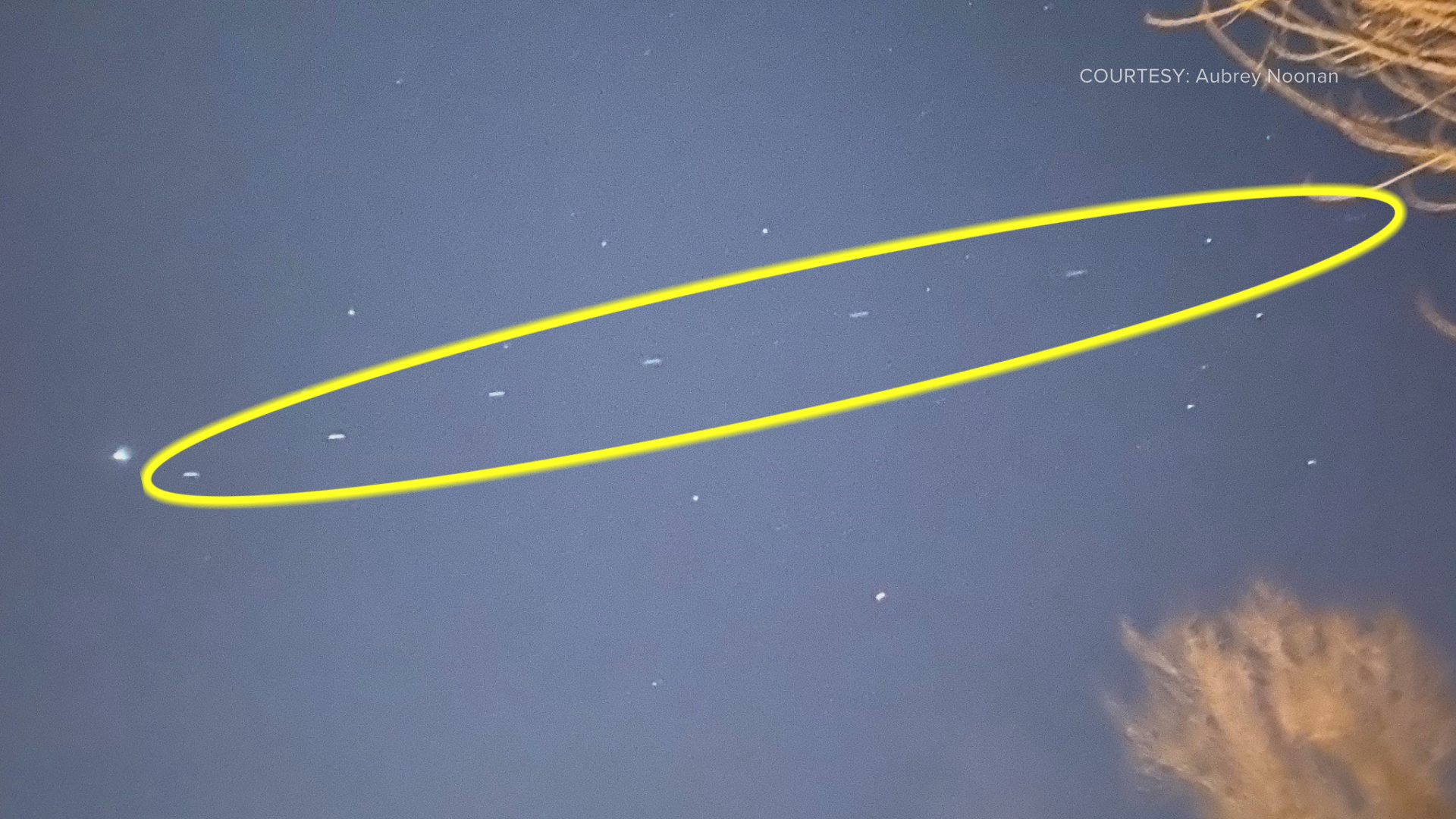PENNSYLVANIA, USA — Seeing actual internet coverage is pretty rare, but with a clear sky - it's possible.
If you've ever looked up and saw a strange line of bright objects in the sky, those are likely Starlink satellites, which orbit Earth daily, providing internet coverage across the globe.
On a clear night, star-gazers can look up and see the bright satellites in the sky. Some lucky stargazers will even look up at exactly the right time, seeing the satellites in a "train" just after they're deployed.
Appearing as a string of bright lights in the sky, Starlink "satellite trains" have prompted numerous UFO-sighting reports when they first took to the sky, according to Space.com. The long lines are only distinctly visible shortly after launch, once they climb to their operating altitude of 340 miles, they disperse and are much more difficult to differentiate in the night sky.
The satellites only reflect sunlight, they don't possess any lights of their own. If they don't reach orbit, they'll make a dramatic return back to Earth. According to Space.com, on Feb. 4, 2022, a freshly launched batch of Starlinks encountered the effects of a big geomagnetic storm. They came crashing back down to Earth over the following days.
In central Pennsylvania, there will be a chance to catch these fleets in action. According to FindStarlink.com, residents can go outside at 8:11 p.m. Tuesday evening for a glance at the Starlink satellites, they should be visible for roughly five minutes. It's advised to look from northwest to southeast for the best view.
Another chance to catch the satellites is at 8:38 p.m. the same night, looking from west to east this time for another five-minute window.
For early morning risers, the satellites should be available from 5:22 a.m. until 5:33 a.m. on Wednesday, Sept. 6.
A real-time map of Starlink satellites and their locations can be found here.
As of May 31, 2023, there are 4,198 Starlink satellites in orbit, of which 3,542 are operational according to Jonathan McDowell, an astronomer with the Harvard-Smithsonian Center for Astrophysics who tracks the constellations on his website.
Due to the frequent launch of Starlink satellites (sometimes multiple times a week), there are plenty of opportunities to catch a glimpse of the infamous "train" in the night sky.

